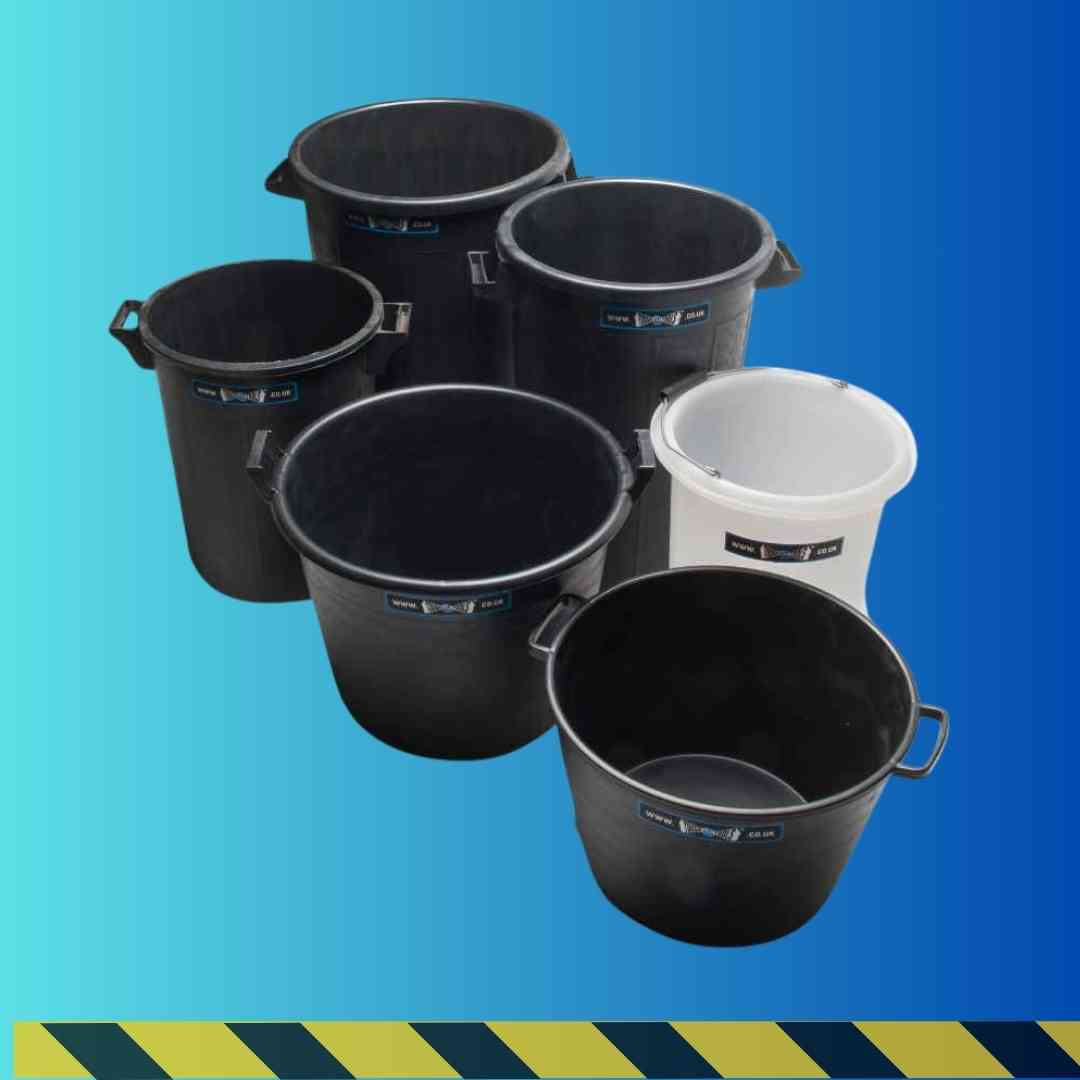The Ultimate Guide to Plasterers' Buckets:Best Choices for Plaster Mixing
Mixing plaster can be a messy, demanding task if you lack the right tools. A good plasterer's bucket is essential for achieving an efficient, smooth workflow. Whether you're a skilled plasterer, contractor, DIY fan, or construction worker in the UK, selecting the appropriate bucket is crucial for successful plastering jobs.. Read on to discover the best buckets for mixing plaster, what features to look for, and which options are the most budget-friendly.
Key Takeaways
-
High-quality materials enhance the durability of plasterers' buckets
-
Different sizes and designs meet various plaster mixing needs
-
Ergonomic handles reduce strain and improve control
-
User reviews provide insightful recommendations

Overview of our Plasterers' Buckets
Understanding the importance of a reliable plasterer's bucket is key to seamless plastering. When you're in the middle of a plastering job, the last thing you need is a bucket that can't handle the workload.
Plasterers rely heavily on their equipment to achieve high-quality results. Plasterers buckets that are made from sturdy materials not only facilitate easy mixing but also handle the wear and tear of daily use. Your heavy-duty bucket should withstand the rigours of construction sites.
Size matters! Depending on the scale of your project, you might need a large mixing bucket or a more compact size. Some buckets also come with features like easy-to-clean surfaces and well-designed handles, which significantly improve grip and reduce strain during use.
Factors to Consider When Choosing a Plasterers' Bucket
Capacity is the foremost consideration. Whether you're handling small renovations or a large construction project, your bucket's capacity should align with your work's scale. Overloading a small bucket can lead to spills and inefficiencies, whereas using too large a bucket for minor tasks can be unwieldy. Tough Tools boasts a large rang of capacity from 25ltr through to 120ltr - Click Here to View
Handles matter more than you'd think. Ergonomically designed handles minimise hand fatigue and provide better control, making it easier to carry heavier loads.
Stability prevents unwanted accidents. Your bucket should be stable enough to sit firmly on a flat surface without tipping over. This reduces the chance of spills, making your worksite safer and more efficient.
Finally, price should match the quality you require. Investing in a good bucket may cost more initially but can be cost-effective in the long term by reducing the need for frequent replacements.
Bucket Options for Plasterers
When it comes to larger mixing needs, bucket baths are indispensable. These sizeable containers facilitate seamless mixing for bigger projects. Wide range of Buckets from 35 Ltr through to 120 ltr
The HD Plasterers Bath is built for heavy-duty use. With a vast capacity, this bath allows you to mix large amounts of plaster at once, saving time and effort. It’s a must-have for extensive plastering work.
Tough Tools buckets and baths are not just big but are crafted with sturdy materials to endure rigorous use. Their sturdy construction means they're resistant to impacts, making them long-lasting companions on any construction site.
Durability and Longevity of Plasterers' Buckets
Durability is crucial for any plasterer’s bucket, given the demanding environments in which they're used. Here's what contributes to a bucket’s longevity:
High-grade plastic resists the wear and tear from continuous heavy use. These buckets can take a beating without cracking.
Tough Tools Buckets feature a smooth internal structure with no ridges for any material to gather reducing contamination.

Frequently Asked Questions
What is the best container for mixing plaster?
The best container for mixing plaster is a sturdy plastic bucket. Look for a durable one that can withstand the mixing process and is easy to clean after use.
How to get plaster off a bucket?
To remove plaster residue from a bucket, allow it to dry completely and then gently tap the bucket to loosen the dried plaster. Use a scraper or a brush to remove any remaining bits, and wash the bucket with warm soapy water.
What to mix plaster in?
Mix plaster in a clean plastic bucket or a mixing tray specifically designed for plaster.
What Are Plaster Buckets Used For?
Plaster buckets are used for mixing, carrying, and applying plaster during construction or renovation projects.

